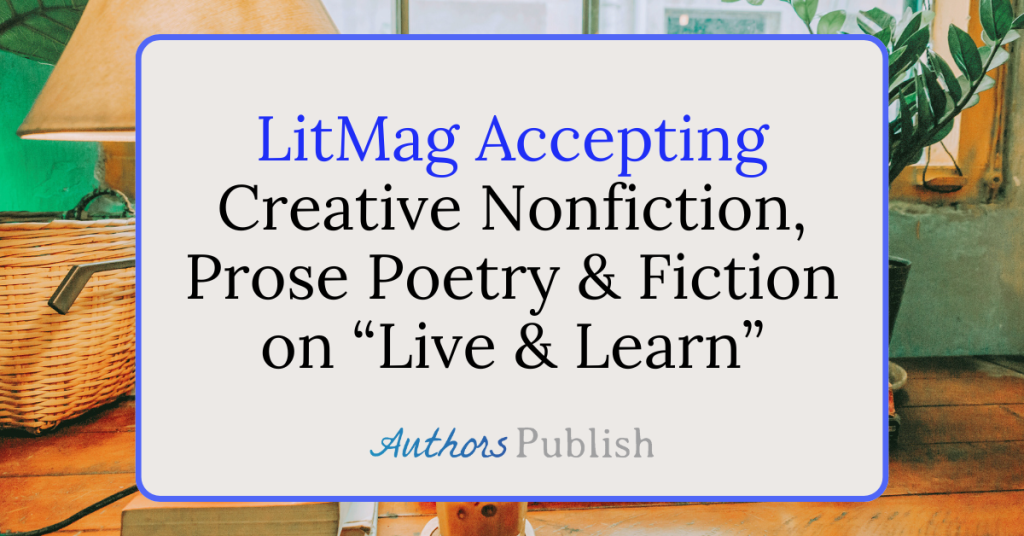By Tom Sigafoos
What are your worst fears? According to a legendary survey, most people are afraid of three things, in this order:
- Snakes
- Death
- Public Speaking
Whether that survey was apocryphal or scientific, there’s a germ of truth in the premise: most people dread the idea of speaking in front of others.
But reading your work in public is a great opportunity to share the vision that inspires your writing, build a reputation, and sell copies of your work. If you’re invited to read or join in an open-mic event, here are a few ways to make the experience easier and more enjoyable.
BEFORE YOU READ
Start planning a week before the event. Print out your work in a large font, one that you can see without squinting. Double-space the text, and leave wide margins.
At the bottom of each page, break the text at a logical point – at the end of a sentence, or at the end of a paragraph or stanza. Submission guidelines for the Sunday Miscellany program on RTE Radio 1 (the Irish national broadcasting system) specify that “each page should end with a full stop.” No matter when or where you’re reading, it’s a good idea.
Please don’t read from your phone, or even from an iPad. Honour your words, and honour your audience. Carry the printed pages to the microphone to show the audience that you’ve prepared for them.
Treat your printed work like a script for a one-person show. Make notes to yourself. Mark up your script – where to place emphasis, pauses, phrasing. Oscar Wilde marked his reading scripts with arrows and flourishes, and his readings were unforgettable.
Rehearse. Rehearse the way that a musician would practice. Rehearse until you’ve got it nearly memorized.
Read your work out loud at home, at full volume. Record your practice readings, and play them back. Do you deliver the words in a monotone? Does it sound like you’re hurrying? Listen for trailing-off-at-the-end sentences and read them again. Write notes on your script as reminders to end those sentences with an appropriate level of punch.
Don’t be afraid to pause. Plan some pauses. Mark them in your script.
If you want to make introductory remarks, practice them along with the written work that you’re going to read.
BREATHING EXERCISES
Your work will sound best if you read it with full lungs. Take deep breaths, not little gulps. When you draw in air with your diaphragm, it will feel like you’re pulling the air into your belly.
If you’ve played a wind instrument, do you remember the feeling of exhaling with force against resistance? Singers learn this too, as do marathon runners, tai chi students, and parents-to-be in childbirth classes. Acting coaches sometimes push their feet into their students’ bellies to get them to project. Richard Burton’s acting coach did this, and you could hear Richard Burton whisper in the last row of the Old Vic.
If you haven’t done any belly-breathing for a while, practice by blowing up some balloons. Feel the back-pressure inflating your lungs to full capacity. Then try to re-create that feeling by blowing outward through pursed lips. Make that pursed-lips breathing exercise part of your routine before you practice reading your work at home. It will also help you relax in public as you walk up to the front of the room and position yourself in front of the microphone.
AT THE MICROPHONE
You’ve been invited to read your work to an audience – perhaps eight or ten people, perhaps two hundred. You’ve printed out your work and you’ve marked up your script. You nearly know it by heart. You’ve practised belly-breathing at home, and you’ve practised reading it many times in full voice.
Your name is called. It’s your turn to read.
Without hurrying, walk to the microphone, belly-breathing on the way.
If you need to adjust the mic, bring it an inch above your chin-level. Stand close to the mic, almost close enough to nibble it. Study a rock-concert video to see how close the singers stand to their microphones.
Pause before you start reading. Make eye contact with your audience. Look at four people – two in the front row, two in the back. If a trusted friend is going to help you with hand-signals (see below), make sure you can see where that person is standing.
Think of the audience as a friend. You’re there to introduce the audience to your work, the same way that you’d introduce two of your friends who haven’t yet met each other.
Take a deep breath and read your work. Include the the phrasing, the emphasis and the pauses that you’ve marked on your script.
Listen for audience reactions while you’re reading. Audiences may laugh, may chuckle, may murmur in dismay (at the events in your poem or story, not at your reading), or may interject words of encouragement (Yes!). Imagine that you’re paddling a canoe across a lake, and each reaction is a wave on that lake. Pause to let the reaction reach a crest, and then continue reading as it settles down.
When you’re finished, nod your head and say Thank you. Allow time for applause before you step away from the microphone.
Enjoy the experience. Enjoyment is contagious.
HAND SIGNALS
If you have a trusted friend who can go with you to the reading, ask that person to stand at the back of the room to let you know what the audience is hearing.
If your friend is having trouble hearing you – if your volume is too low – ask them to raise their hands in the air the way they’d hold up a large loaf of bread, or a bowl. Then move closer to the microphone, or speak louder (if you can), or ask someone to turn up the volume on the amplifier.
If your friend thinks you’re reading too fast or hurrying through the material, ask them to push their hands apart, the way they’d open an elevator door or separate two squabbling teenagers.
If your friend thinks that you’re reading too slowly or taking too long with the piece, ask them to circle their hands like someone who’s winding in the line on a fishing reel.
Practice these gestures with your friend before the reading.
If someone can video your reading, you’ll have a great tool to review and analyse your performance. Let it sit overnight before you review it. Make a library of your readings. You’ll have fun watching yourself add touches and subtleties over time.
To study outstanding examples of public readings, subscribe to Brain Pickings by Maria Popova (newsletter@brainpickings.org).
Tom Sigafoos is the author of Code Blue: A Frank Chandler Mystery. Excerpts from his historical novel The Cursing Stone have been published in The Copperfield Review. A member of WORD, he also serves as PRO for the Allingham Arts Association and Coordinator of Fighting Words North West. He lives in Co Donegal, Ireland.






